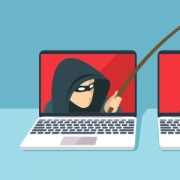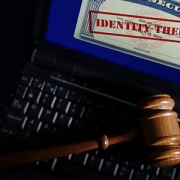Game Over: NBA team losses valuable data

Good cyber security, much like the best NBA defenses, must be strong and able to stop threats from every which way. For the Milwaukee Bucks, their on-court and cyber security defense could both use a little practice. Yahoo! Sports reported that the Milwaukee Bucks sent out the names, addresses, Social Security numbers, compensation information and dates of birth of players as part of a spoofed email attack. Practice these four email security tips and don’t let this happen to your business.
Education is key
There are countless cliches out there promoting the importance of education, but when it comes to cyber security, you might as well embrace them all. In the case of spoofed emails, you need to make sure your employees know what these are and how they can harm your company. They can come in several forms and look to attack your organization in a number of different ways. A good defense starts with trained employees using best security practices when it comes to emails. Knowledge isn’t just the key to success, it’s the building block of a comprehensive email security plan.
Check the sender
The easiest way to determine a real email from a spoofed one is to view who is sending it. While your basic junk mail folder will screen the really lazy attempts at spoofing, you and your employees can’t rely on it to weed out everything. A lot of cybercriminals have gotten skilled at mimicking the look and feel of companies through professional looking graphics and signatures. For starters, you are going to want to ignore email display names as these can be deceptive. The domain name provides the best clues as to who the sender really is. For instance, if an email requesting your company’s financial documents claims to be from the IRS but the domain reads IRSgov.com, it’s a spoof email since that domain is not what the IRS uses. If you ever spot an email containing a domain you consider to be suspicious, delete it immediately. If it is from a legitimate sender, they will send you a follow up email in a couple of days.
Embrace DMARC
Domain-based Message Authentication, Reporting and Conformance (DMARC) can help reduce the risk of spoofed emails being sent internally. For businesses that do not set this up, it is possible for someone to spoof an email account that looks like it is from your business or a current employee and send it from a different server. As we saw in the case with the Bucks, these can appear legitimate to employees who will then in turn do what is requested such as turn off security settings or handover sensitive data. With DMARC in place you can prevent spoofed emails from utilizing your domains by requiring any email sent by your domain to come from your server. This greatly reduces the risk of an internal spoofed email showing up in the inbox of your employees.
Utilize email protections
A lot of companies believe they can get by with the simple protections that come standard with an email client. However, doing the bare minimum is rarely enough to stop spoofed emails, not to mention all of the other threats lurking in your inbox, and high-powered email and spam protection will give your organization the added layer of security it needs. Much like elite-level basketball players need the best coaching and equipment to succeed, the only way to truly reduce the risk of falling victim of a spoofed email is to educate your staff properly and then equip them with email filtering. This ensures they aren’t wasting their time constantly trying to identify legitimate emails from fake ones but are prepared when the situation presents itself.
When it comes to email security, working with us is a slam dunk. We may not have the skills of Steph Curry on the basketball court but when in the realm of IT, competitors say they want to be like us. Give us a call today to find out more.









